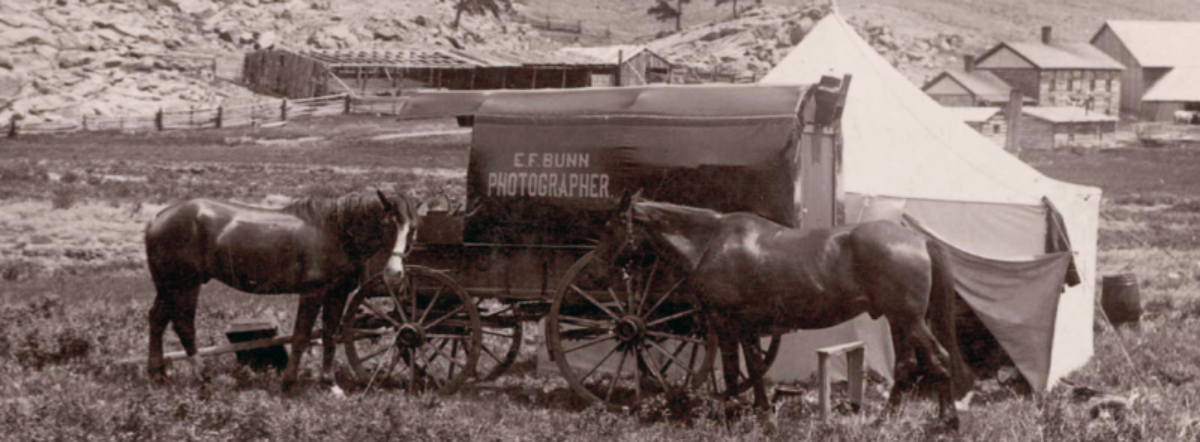Charles C. Wright was born in East Livermore, Maine. He married Sarah Ann Judkins on November 28,1860, in Lawrence, MA. Marriage records cite his occupation as a teamster.
By 1870, Wright, known professionally as C. C. Wright, operated a photography studio in Lafayette, Indiana where he worked for more than a decade. In 1882 he arrived in Colorado, setting up a temporary gallery in Central City, before opening a studio in Denver that December over Reithmann’s Drug Store, at the corner of Fifteenth and Larimer streets.

In 1884, for the July 4th holiday, Wright and his wife accompanied a small group to Silver Plume on the Colorado Central via the recently completed Georgetown Loop, an engineering feat of horseshoe curves and four bridges that were used to link Georgetown with Silver Plume, only two miles apart.
That same year, Wright employed a young Adolph F. Muhr, later known for his portraits of Native Americans. In 1885, Wright’s brother-in-law, David Roby Judkins, briefly worked at the Denver studio. In December 1885, Wright opened a branch gallery in Central City, employing Morton E. Chase.

Wright photographed the Colorado legislature on more than one occasion, making a composite portrait of the 1885 Colorado Senate. He also made a group portrait of the pages that assisted the state legislature. Nine boys wearing hats bearing the words “House Page,” stand in front of a hand painted backdrop. The backdrop is signed on the lower left corner by Davis and a partner’s name that is illegible.
Wright was one of six photographers who submitted work to the Colorado Manufacturers Exposition held in Denver in 1886.

On January 20, 1887, Wright was traveling through the city in his carriage when he made a sharp turn. The carriage tipped over, and Wright landed in the street. He died less than a week later from injuries sustained during the accident at the age of forty-six. A large funeral was held with participation of fraternal organizations and many local photographers. The procession led by the Opera House band, walked to Wright’s studio where services were conducted. The crowd then proceeded to Riverside Cemetery.
Shortly before his death, Wright had opened a new studio at 910 Sixteenth street. His wife is listed as a photographer in the 1887 Denver City Directory. Henry Rothberger took over the studio by October 1887.
Thank you to Beverly W. Brannan, former curator of photography, Library of Congress, for proof-reading this post.



